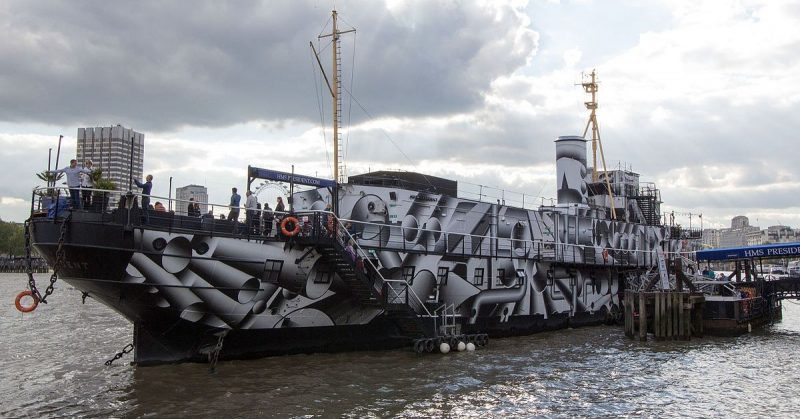A petition by the HMS President Preservation Trust is appealing for 10,000 signatures from the freight, logistics and shipping communities to save the last “Q” ship dating back to the First World War. The iconic ship disguised as a merchant vessel followed convoys only displaying her hidden firepower when a convoy came under attack from German U-boats.
The charity, for a second time, was refused £330,000 in Heritage Lottery funding in 2016. Explaining the refusal, the funding organization said they considered the project to refurbish the hull and re-location at a new mooring in Central London, because of the Thames Tideway Tunnel Sewer Project as, “too high risk.” She will be moored close to London Bridge.
During the Second World War she was moored on the Thames and employed to safeguard St. Paul’s Cathedral from the Luftwaffe and as a base for the French Resistance. The ship is scheduled to play an important role of the WW1 Centenary in 2018.
The HMS President Preservation Trust has support from a number of senior politicians and Peers, the military and related charities and organizations like the National Maritime Museum of the Royal Navy, 14-18 Now and the National Historic Dockyard. Various prime ministers have described the ship as ‘Part of Britain’s Heritage.’ When Jeremy Hunt MP was Culture, Media and Sports Minister he described the President as a ‘national treasure.’
The charity’s last opportunity for funding is an appeal and application to the Treasury for government financial assistance. It is hoped that new chancellor Philip Hammond, previously the Defence Secretary, will intervene to save the ship, Handy Shipping Guide reported.
HMS President is now known as HMS President (1918) to differentiate her from the similarly named Royal Navy Reserve base in St. Katherine’s dock in the Pool of London. Originally she was named HMS Saxifrage when built as one of the first anti-submarine vessels of the Flower Class. During the Second World War, she and similar ships became escort sloops accompanying convoys which evolved into modern frigates. She took her current name in 1922 and was transformed to serve as a Royal Naval Reserve drill ship.
Those wishing to make a pledge can do so through Justgiving.com.
